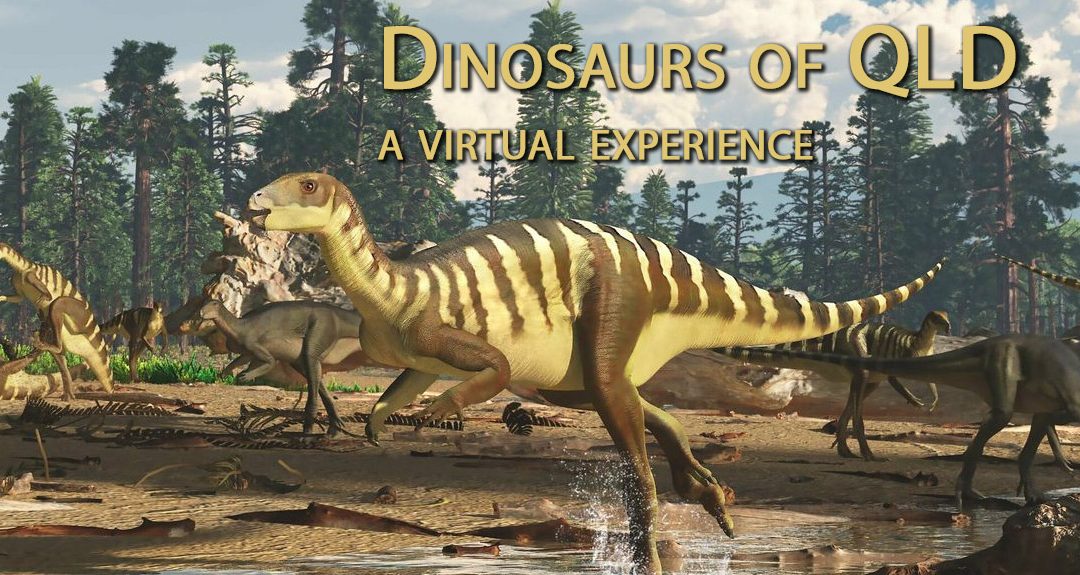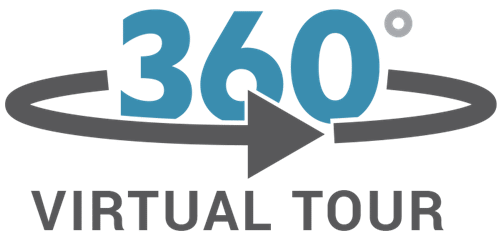Fossilised remains of Dinosaurs have been found in Queensland since the 1960s, but in recent years, more and more evidence of dinosaurs have been found in the Qld Outback, in the form of fossilised bones and even footprints. Queensland is fast becoming recognised as one of the best locations for finding Dinosaur remains in Australia, and if discoveries continue, could well turn out to be one of the World’s premium dinosaur fossil locations.
Queensland Dinosaurs…
Over 100 million years ago, the interior of Queensland was grazed by herds of dinosaurs. Large areas of the Queensland Outback were once an inland sea, and underwater dinosaurs thrived.
- The north-western QLD town of Richmond, has Australia’s best collection of marine fossils – frozen in time, from over 110 million years ago, and nearby Porcupine Gorge National Park is rich with 500-million-year-old fossils etched into its walls.
- Further south the little town of Eromanga, contains the Natural Heritage Museum, the Living History Centre and is the home to Australia’s largest dinosaur, a 95-98-million-year-old Titanosaur called ‘Cooper’.
- Winton is home of The Australian Age of Dinosaurs Museum of Natural History – the world’s largest collection of Australia’s largest dinosaur fossils.
- Lark Quarry is the only known location of a dinosaur stampede, which has been preserved perfectly by Mother Nature – with footsteps moulded into the rock.
- … and further to the North, Riversleigh, as a part of the Australian Fossil Mammal Sites World Heritage Area is one of the top 10 fossil sites in the world.
Dinosaur Tourism
Queensland Tour Operators are capitalising on recent discoveries of dinosaur remains and fossils. Tourist attractions and travel destinations such as those mentioned above are striving to be recognised as destinations for Dinosaur and Fossil Tourism with the aim of showcasing them (as much as possible) in the environment they were discovered. In recent years a lot of money has been invested in developing Dinosaur Tourism, however, there are a number of challenges to overcome :
- Remoteness – Queensland is BIG, and many of the dinosaur attractions are in remote locations. Longreach – Queensland’s “Gateway to the Outback” is also becoming known as the starting point for Queensland’s Dinosaur Trail … however, Longreach is a 12Hr drive (or 2hr flight) from Brisbane and most dinosaur attractions accessible from Longreach involve another 2-6 hrs drive (North, West or South) from here.
- Privacy – Most of the sites that dinosaur bones and fossils have been discovered are on private land and are not readily accessible to the general public
- Protection -even though these fossils are millions of years old, they are still delicate and need to be treated carefully, so it is often not possible (or reasonable) to have the general public traipsing over and around discoveries
- Security – Fossils can be worth a LOT of money, so the actual location of many anthropological dig sites need to be kept secret
Why a Virtual Experience ?
A Virtual Dinosaur Experience provided via a Virtual Tour has the potential to provide solutions to all of the problems listed above, and offer many advantages (outlined below) over traditional marketing strategies such as boring old Factsheets, Photos, and even passively watching a Video…
- Accessibility – a Virtual Tour can be available to anyone with Internet Access. Potential visitors do not have to physically visit a location to get a “taste” of what is on offer. This is ideal for Remote, Interstate, or even International visitors, it also makes the attraction available to a much wider (world wide) audience and makes it potentially accessible to school groups, and people with disabilities who may not otherwise have an opportunity to visit.
- Extendibility – A Virtual Tour can be extended and modified over time… so as the attraction changes, the existing tour can be updated
- Diversity – it is possible to include or reference existing content (Information, Factsheets, Photos, Video, Audio, etc..) from within a Virtual Tour allowing you to repurpose existing material… you can also directly link to or embed any other information or content available on the Internet.
- Secrecy – whilst it is possible (and often useful) to include map overlays within the Virtual Tour, in situations where secrecy of a location is important, it is possible for people to virtually visit the site, without actually knowing its physical location,.
- Interactive – Virtual Visitors can control there own experience… They don’t necessarily have to passively sit and watch (although you can provide a guided experience if you wish), Virtual Visitors are actively involved in deciding what, when and how they experience the attraction
- Innovative – a Virtual Tour is a unique and innovative way for potential tourists to “experience” and interact with your facilities. They can get a “taste” of the experiences you have on offer
- Multi Use – there are many ways your Virtual Tour can be used. It can be embedded into a Website, posted onto Social Media, emailed as a link, or experienced via a Virtual Reality (VR) Headset
- Reusable – once you have a Virtual Tour setup, it can be used and re-used multiple times… Only needing refreshing/updating if you have a significant change in the physical appearence or layout of your attraction
- Ease of Use – most people find using and navigating a Virtual Tour fairly intuitive and are able to use it with little or no instruction
- Time to Market – typically we would be able to create and publish your Virtual Tour within 7-10 days of the photoshoot (large or very sophisticated VTs may take a little longer)
- Emotional Attachment – because of the interactive process involved in undertaking a Virtual Tour, and the “control” the user has over their experience, it naturally becomes a more emotional experience than is possible with photos or video (which offer very little in the way of participation).
- Extra Information – a Standalone Virtual Tour can include hotspots and extra functionality to help showcase your attraction, such as :
- Your Branding/Logo
- Links to a website
- “Call Now” Link to directly dial a phone number
- Menu system / Navigation
- 360° Video
- Hotspots with popup Information, Photos or Video
- Background Sound
- and more…
Dinosaur Virtual Tour Examples
Here are some examples of how Virtual Tours are already being used by various Museums and Attractions throughout the world to help showcase dinosaurs and fossils. These examples use a variety of methods and technologies and provide a variety of features :
- Smithonian National Museum of Natural History – A Standalone Virtual Tour with a map overlay and Thumbnail navigation… but limited coverage sometimes gives an awkward “teleport” experience when moving between nodes
- Melbourne Museum Dinosaur Walk – a simple Google Virtual Tour provides basic functionality but is highly visible from Google Maps and can easily be embedded and sent as a link
- Dinosaurs and Natural World Exhibition – World Museum Liverpool : a Matterport Virtual Tour (sexy to use, but restricted hosting and limited features)
- Dinosaurs of China – Wollaton Hall : Another Matterport Virtual Tour
What Does a Virtual Tour Cost?
Prices for 360° Photos or a Virtual Tour start from as little as $120 for an Individual Photosphere (which can be published to Google Maps or embedded into a website) ranging up to several thousand dollars for a large sophisticated and feature rich Standalone Virtual Tour.
Costs will vary depending on the size and layout of the areas you’d like to include in the virtual tour… how you want it to be used,… and the features and functionality you would like to offer. If you’d like to discuss how we can help you create a Virtual Tour, give Andy a call on 0403 023 223 or Contact Us.




